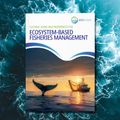EcoScope researchers use big data to reveal clandestine Mediterranean fishing hotspots
EU-funded EcoScope project researchers Gianpaolo Coro and Laura Pavirani of Italy’s National Researcher Council’s Institute of Information Science and Technologies A. Faedo (CNR-ISTI) and Anton Ellenbroek of the UN Food and Agriculture Organisation (FAO) published a study titled “Extracting Mediterranean Hidden Fishing Hotspots Through Big Data Mining” in IEEE Access on June 18, 2024 detailing their methods and findings.
“We developed a fast and reusable approach that can produce new information to help management authorities understand the extent of hidden fishing,” the research team commented. “We used an Open Science-compliant (reproducible, repeatable, and reusable) cloud computing-based big data analysis to estimate the manifest, total, and hidden fishing distributions of AIS-carrying vessels in the Mediterranean Sea from 2017 to 2022, processing about 1.6 billion vessel speed and position data,” they added.
The researchers estimated the principal hotspots of hidden (potentially clandestine) fishing over the years and the potentially involved stocks from these data. They then assessed whether the hotspots truly corresponded to illegal fishing or simply reflected Automatic Identification Systems (AIS) communication issues, and concluded that most hotspots did in fact potentially correspond to illegal fishing.
“We verified - through literature studies and public repositories of illegal fishing reports - that most hotspots corresponded to illegal fishing,” the authors commented.
Big data analysis can reveal fishing patterns and hidden activities from vessel position and speed data, such as those transmitted by fleets carrying AIS, the researchers explained. Analysing vessel movements provides insights into fishing dynamics, aiding decision-making, while measuring unmonitored fishing activity (hidden fishing) helps counteract the underestimation of fishing pressure, they added.
Major hotspots of illegal, unreported and unregulated (IUU) fishing in the Mediterranean were identified off the coasts of Spain, in the Gulf of Marseille, the Strait of Sicily, around Malta, the Tyrrhenian Sea, the Patrasso Gulf in the Ionian Sea, the Thermaic Gulf near Lesvos and Izmir in the Aegean, and near the Gulf of Alexandretta. The hotspots identified included protected and prohibited areas.
While hidden fishing off the Israeli coast was found to be primarily a result of poor AIS reception, not IUU fishing, hidden fishing in the North Adriatic appears to be the result of both IUU fishing and poor AIS reception, the researchers said.
Hidden fishing accounts or around 1% of the Mediterranean’s annual total fishing activity, and fully 300 hours per year in the Western Mediterranean alone, the EcoScope researchers estimated, noting that this potentially represents a significant loss of information on fishery traffic, catch and income. The hotspots identified impacted 17 established fishing stocks, which were “almost constant” targets of (legal and illegal) fishing, the researchers added.
“Our maps can be used to direct (rather than substitute) detailed regional and local investigations”, the researchers commented.
Nonetheless, the information on sites and the intensity of hidden fishing activity in the Mediterranean is “crucial” for improving authorities’ capabilities in terms of monitoring and enforcement. “Our estimates shed light on the magnitude of IUU activities and their potential impact on marine ecosystems,” the researchers said, adding that the information is also valuable within the larger context of estimates of anthropogenic driving forces in the Mediterranean.
Due to the importance of detecting hidden fishing activity for FAO, the researchers were invited to demonstrate their methodology and preliminarily present their results at an FAO seminar last year, they noted.





